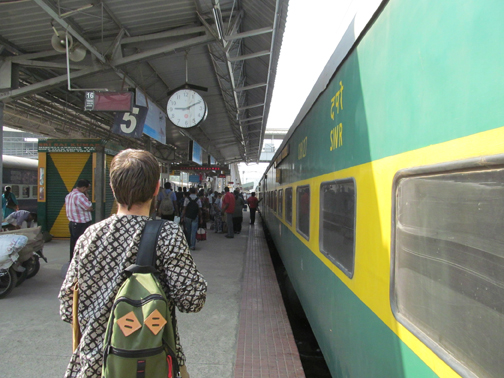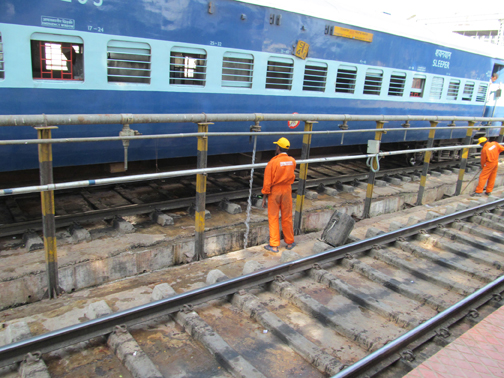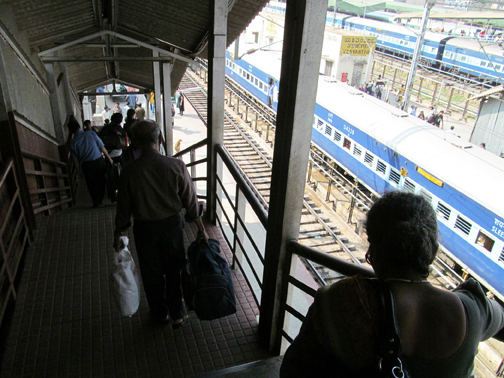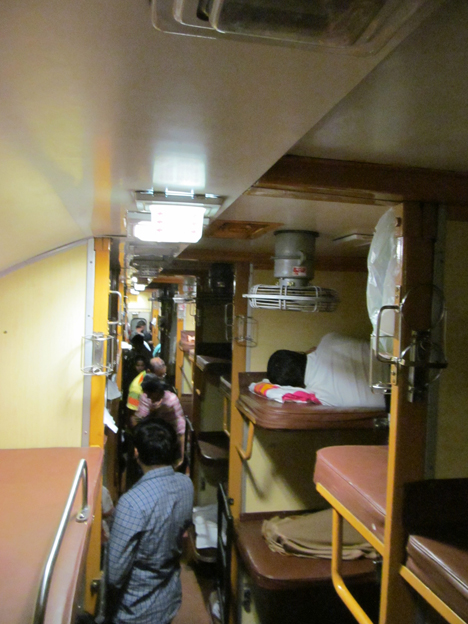David Stairs

Train travel in India is popular. Is it any wonder? Domestic flights cost ten times as much as trains. In fact, train travel is SO popular here, that it’s hard to reserve a seat if not done well in advance.
Travel takes a couple of basic forms: comfortable accommodations are either sleeper or seated air-conditioned (1st, 2nd, & 3rd), while everybody else travels open carriage second class sleeper or seater. Here think Darjeerling Limited. These coaches are crowded, and occupied by poorer people or those on thin budgets, like students. In order to make a train reservation, one must create an account at IRCTC, the online reservation site of the Indian Railways Catering and Tourism Corporation, Ltd. To guarantee a seat or a bunk, this should be done at least 6-8 weeks in advance, otherwise the only option is wait listing.

Second-class carriage
India has the third largest rail system in the world after Russia and the U.S., so the system is complex, with many stations and times. Some trains only run intermittently; the train to Pondicherry leaves Bangalore on a Friday and returns the next day. And it’s difficult to book a reservation without knowing either the train or station code. Indian trains run on a timely basis. Many express trains travel at night, the better to avoid heat in the second class carriages. My train, the Yesvantpur Express, was an overnighter from Yesvantpur Junction in Bangalore to Ernaculum, one of two stations in Cochin on the Gulf of Arabia, leaving at 9pm, arriving at 8am.

Yesvantpur station
The first thing one notices about Indian rail stations is they are crowded. Unlike Indian airports, which handle a much smaller volume of traffic, rail stations have people coming out of the woodwork. People with small children, even the elderly are laying on bags everywhere at all hours of the day and night sleeping. Step aboard your air-conditioned coach when it’s 90°, and you feel instantly relieved. A couple hours later, when you begin to shiver, you may feel different. But then you will purchase bedding from the cabin steward for 50 rupees and feel better.

AC three-tier sleeper
The Yeshvantpur Express AC coach was a triple tier fold-down bunk carriage. Indians are early risers, so by 10pm some passengers were already turning in. These sleepers are public coaches; one must bear the noise and presence of one’s neighbors. Sometimes, it felt like traveling in a troop train, but the soldiers were all middle-class Indian families. Food is provided by the food and chaiwallahs before the train leaves the station, with tea and biryanis the favorite. Bathroom facilities are rudimentary, and located in the antechamber between coaches, unfortunately for the coach steward, whose bunk is just beside the head.

As you rock gently forth and back during the 600 kilometer passage to Cochi, having witnessed a neighboring family’s bedtime routine, seranaded by a nearby fellow’s rhythmic snoring, you can gloat at the fact that you are in India, traveling by train, for only $8. What could be better than that?
David Stairs is the founding editor of Design-Altruism-Project











Leave a Reply
You must be logged in to post a comment.